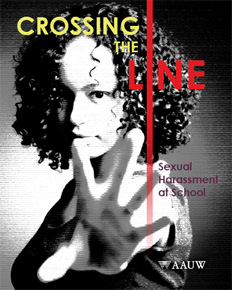
A study conducted by the American Association of University Women shows 48 percent of 7th to 12th graders experienced sexual harassment in the 2010-2011 school year with 87 percent of those who have been harassed reporting negative effects such as absenteeism, poor sleep and stomachaches.
“Crossing the Line” presents the most comprehensive research to date on sexual harassment in grades 7-12 and reveals some sobering statistics about the prevalence of sexual harassment and the negative impact it has on students’ education. It provides fresh evidence about students’ experiences with sexual harassment, including being harassed, harassing someone else, or witnessing harassment.
Verbal harassment (unwelcome sexual comments, jokes, or gestures) made up the bulk of the incidents, but physical harassment was far too common. Sexual harassment by text, e-mail, Facebook, or other electronic means affected nearly one-third (30 percent) of students. Interestingly, many of the students who were sexually harassed through cyberspace were also sexually harassed in person.
The sad reality shown by the 1,965 students surveyed nationwide is that sexual harassment has become part of the school day for many children. Is this study relevant to Escambia County? Remember Tate High School’s sex in the classroom and the infamous bus ride at Warrington Middle School?
Harassers come in all shapes and sizes, but the AAUW survey revealed overarching patterns. Nearly all the behavior documented in the survey was peer-to-peer sexual harassment. Boys were more likely than girls to say they sexually harassed other students (18 percent versus 14 percent). Most students who admitted to sexually harassing another student were also the target of sexual harassment themselves (92 percent of girls and 80 percent of boys). Almost one-third (29 percent) of students who experienced sexual harassment of any type also identified themselves as harassers. only 5 percent of students who had never experienced sexual harassment identified themselves as harassers.
To see the report, visit http://www.aauw.org/learn/research/crossingtheline.cfm